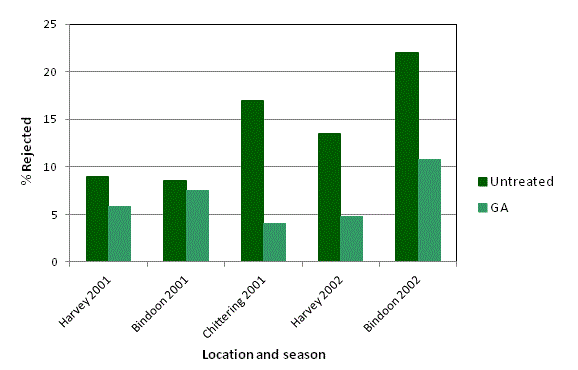Watermark
Watermark on Imperial mandarins (known as ‘waterburn’ in eastern Australia) occurs during wet weather when the bottom of the fruit is wet for a prolonged period (Figure 2).
The colder and wetter the area the more severe the problem. Up to 60% crop losses were recorded from one property alone in the Harvey region when GA was not used.
GA is a registered treatment that is widely used with great success interstate. Prior to 2000 there was considerable reluctance to use GA particularly on Imperial mandarins in Western Australia. This reluctance was generally based on misinformation and stories distorted with the passage of time. Local concerns related to delays in colour development, reduced yield in subsequent years and tear stain spray damage.
Demonstrations were conducted on orchards in Bindoon, Chittering and Harvey in 2001 and 2002 where GA was applied at label rates and the correct time. The results showed that the incidence of watermark was reduced by up to 80% without any negative effects (Figure 3).
Before and after surveys provided a useful measure of industry adoption.
In 2000, less than 10% of growers surveyed were using GA to reduce watermark. In 2003 after the demonstrations and extensive effort, more than 80% of the same group were using GA as a strategy to reduce watermark in their Imperials.

